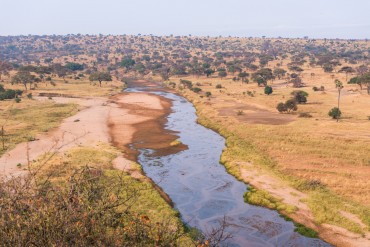
Tarangire National Park
Tarangire National Park
Tarangire National Park lies 120 km south of Arusha, and offers a wide variety of wildlife in its area of 2,850 sq. km. The Tarangire River, after which the park is named, provides the only permanent water for wildlife in the area. When the Maasai Steppes around the park dry up with the end of the long rains in June, migratory animals return to the Tarangire River, making Tarangire National Park second only to Ngorongoro in the concentration of wildlife. This period stretches between June and October and it is the best season for game viewing in Tarangire. The most common animals found in the park include zebras, wildebeest, lions, leopards, waterbucks, giraffe, elephants, gazelles, impala, gerenuk, lesser kudu, and the beautiful Fringe-eared Oryx. You may be lucky to spot the tree-climbing python, for which the park is famous, or the Greater Kudu and the Roan Antelope which are rare species in Northern Tanzania. Over 550 bird species have been recorded in the Park.
The Serengeti National Park is a world heritage site. It gets its fame from the annual migration of wildebeest. Serengeti is a famous spot because it has the highest concentration of plains animals in the world. It is also referred to as ‘endless plains’. Some common plains species that you…
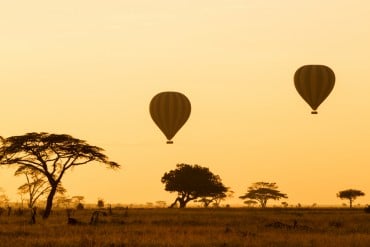
Serengeti National Park
Serengeti National Park
World Heritage Site and Biosphere Reserve, Serengeti National Park is undoubtedly one of the best-known wildlife sanctuaries in the world, famed for its annual wildebeest migration. Aptly referred to as “endless plains” by the Maasai, Serengeti provides sanctuary to the highest concentration of plains animals in the world. Within its area of 14,763 sq km are more than 4 million large mammals living in total wilderness freedom. About 35 species of plains animals can be observed including elephants, buffaloes, topi, wildebeest, gazelles, zebras, lions, leopards, cheetahs and over 400 species of birds can be observed in the Serengeti National Park.
The main game drive areas in the Serengeti are the Seronera Valley, the Western Corridor, Lobo or northern Serengeti, and the southeastern Serengeti plains extending to Ndutu in the Ngorongoro Conservation Area. The Seronera valley in central Serengeti, endowed with permanent surface water, attracts a large concentration of wildlife throughout the year. From December to April, southeastern Serengeti plains provide the best opportunities for game viewing as hundreds of thousands of migratory animals including wildebeest and zebras are concentrated in this part attracted by the short palatable grass. Between May and July, when drought sets in, Serengeti is the site of one of the most breathtaking events in the animal kingdom – the migration of thousands of wildebeest heading southwest, north or west in search of water and greener pastures in and around the National Park. According to the Serengeti National Park official guide “Lines and columns of wildebeest up to 40 km long have been observed (from the air) heading southwest, north or west as the wildebeest trek to the woodland zone”. The Lobo area in northern Serengeti remains rich in wildlife during the dry months of August to November when most of the game has moved from the grass plains in the south. This is also true of the Western Corridor towards Lake Victoria when the migration usually lingers in the area between June and July.
A large part of the migratory animals moves into Maasai Mara in Kenya by September, staying there hardly three months before streaming back into northern Tanzania and the Serengeti plains in November. The Serengeti Migration has been named one of the Seven Natural Wonders of Africa
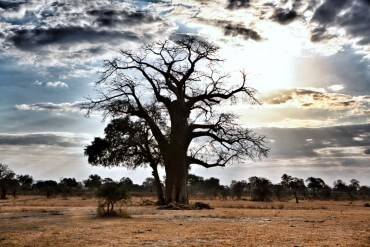
Selous Game Reserve
Selous Game Reserve
The Selous wilderness, with an area of 55,000 sq km meets the kind of dream visitors have of Africa of the early European explorers like Dr. Livingstone and Henry Stanley. The Selous, a United Nations World Heritage Site, offers a variety of game viewing activities to the visitor, including the thrilling experience of a foot safari in the company of an armed ranger. This is in addition to game drives in 4X4 vehicles, and boat safaris on the Rufiji River, providing a richer and exciting game viewing experience to the visitor. Common animals in the game reserve include elephants, wildebeest, zebra, wild dogs, lions, leopard, hippos, eland, buffalo, giraffe, greater kudu, impala, sable antelopes, and about 400 species of birds.
The best time to visit the Selous is from June to October. During the long rains, between March and May, some parts of the Selous remain inaccessible and temporarily closed for game drives; most of the accommodation facilities also close during this time.
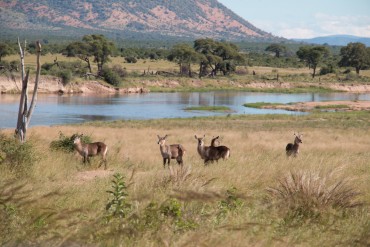
Ruaha National Park
Ruaha National Park
Ruaha National Park takes its name from the Ruaha River, which flows along its southeastern border. The river provides permanent water in the park, and during the dry season, there is a large concentration of wildlife along its banks. Covering an area of 20,226 square kilometres, Ruaha is the largest National Park in Tanzania. The park is rich in flora and fauna with a great variety of wildlife including the rare the Kudu (both greater and Lesser Kudu), Roan & Sable Antelopes and some endangered species like wild dogs. Ruaha is famous for its large herds of elephants said to have the highest concentration in East Africa. Other animals in the park include buffaloes, lions, leopards, cheetah, giraffes, zebras, elands, impala, bat-eared foxes, Jackals, and the hippos and crocodiles which inhabit the river. The park is rich in birdlife with more than 571 species including migrants from within Africa, Europe, Asia, Australian rim and Madagascar
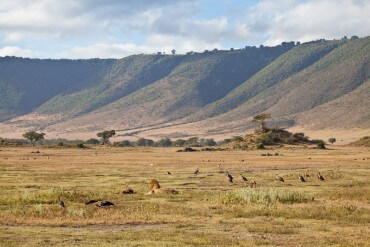
The Ngorongoro Conservation Area
The Ngorongoro Conservation Area
A UNESCO protected World Heritage Site and an International Biosphere Reserve, the Ngorongoro Conservation Area covering an area of 8292 sq km consists of the Ngorongoro Crater itself, Empakai Crater, Oldupai Gorge, and Ndutu including the short grass plains of the southeastern Serengeti ecosystem. The Ngorongoro Conservation Area is a pioneering experiment where people (the Maasai), their livestock and wildlife co-exist and share the same protected habitat.
The stunning spectacle of the Ngorongoro Crater, with its steep walls falling some 610 meters to the floor, is undoubtedly one of the highlights of a safari tour in Tanzania. “It is impossible to give a fair description of the size and beauty of the Crater for there is nothing with which one can compare it. It is one of the Wonders of the World.” once wrote Professor Bernhard Grzimek. The crater floor is home to thousands of plain animals, including the rare black rhino, zebra, wildebeest, gazelles, hippos, eland, elephants, and a large predator population of lions, hyena, and jackal.
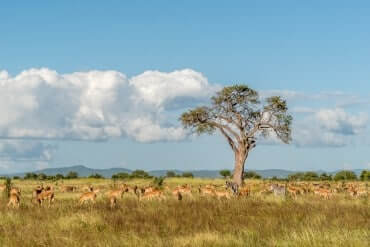
Mikumi National Park
Mikumi National Park
Mikumi National Park (3,230 sq m) is about three to four hours drive from Dar es Salaam, lying astride the highway to Zambia, en route to Ruaha and Udzungwa Mountains National Parks in southern Tanzania. The park is dominated by flood plains and grasslands and rich in wildlife including buffalo, giraffe, wildebeest, zebra, hippos, baboons, impala, lions, leopard, warthog, eland, and the rare wild dogs. More than 400 bird species have been recorded, including a host of European migrants during the rainy season.
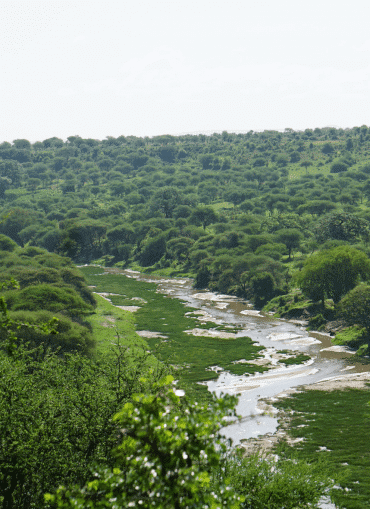
Lake Manyara National Park
Lake Manyara National Park
Nestling at the base of the Great Rift Valley escarpment, less than 130 kilometers from Arusha town, is Lake Manyara National Park, one of the oldest and most popular sanctuaries in East Africa. It is home to a myriad of birdlife and the famous tree-climbing lions. The park offers an impressive diversity of habitats for animals and birds: from the slopes of the rift escarpment and groundwater forest to the acacia woodlands, open grassland, and the soda lake itself which occupies 77% of the National Park total area of 330 sq m. Common animals include baboons, giraffe, impala, wildebeest, buffalo, zebra, elephant, hippos, with over 400 species of birds including water birds and the colourful migratory flamingoes.

